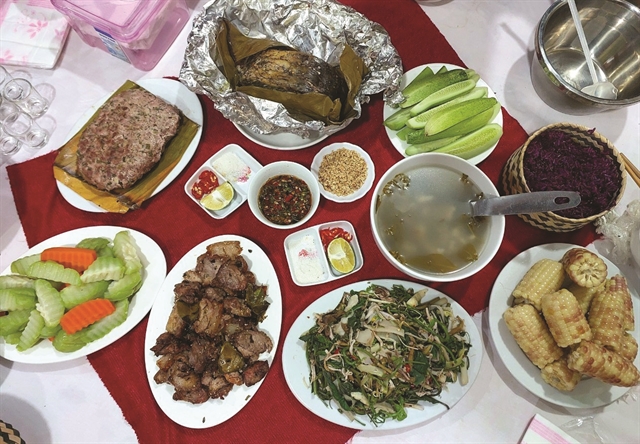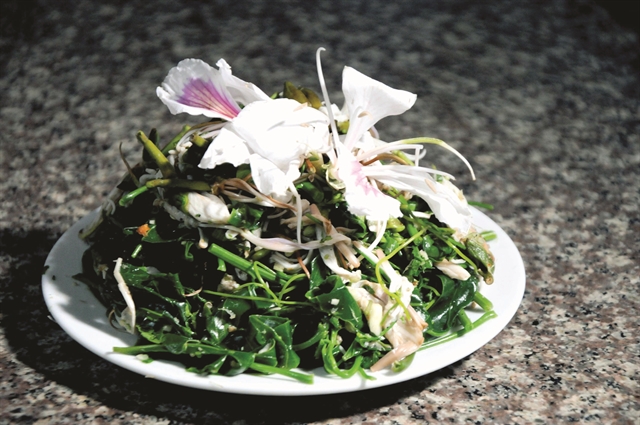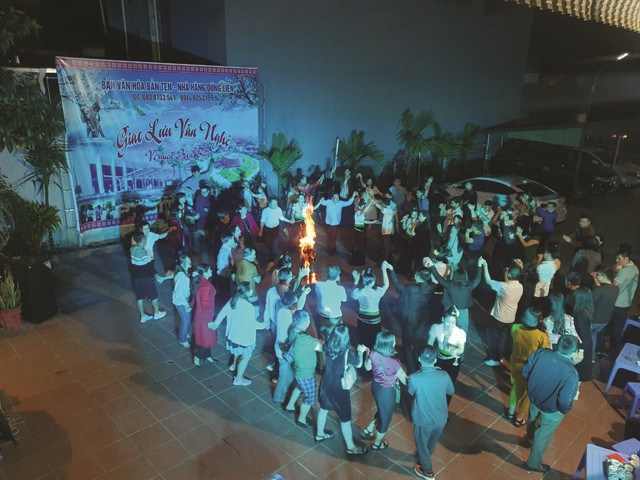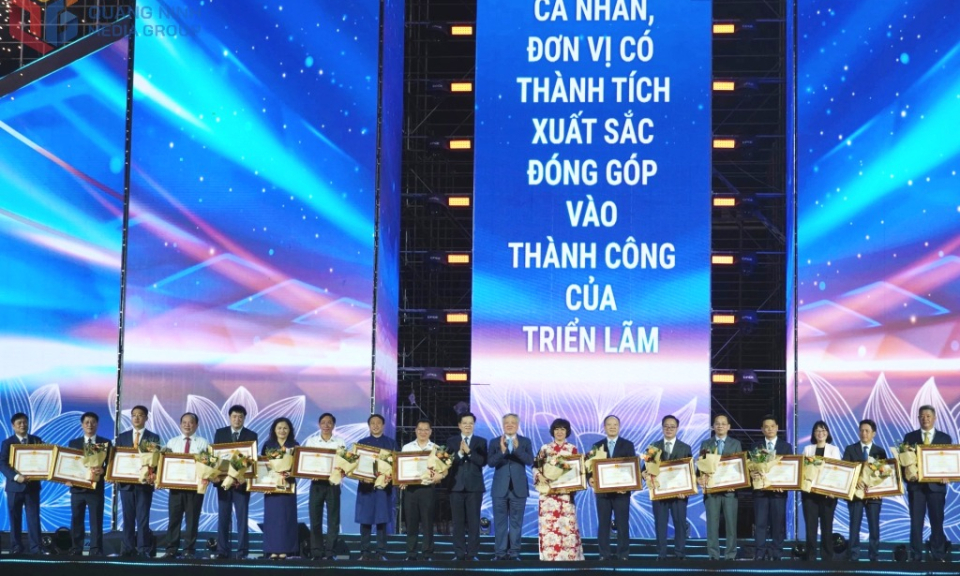Điện Biên Province's mouthwatering delicacies
Điện Biên not only attracts tourists with its historical sites and 19 local ethnic groups, but also through its unique cuisine. The delicacies can be found at Nam Hồng Restaurant and other restaurants at Ten A and Ten B villages, Thanh Xương Commune.
March is a time when ban (Bauhinia) flowers bloom throughout the mountains and forests of the northern province of Điện Biên. I recently joined the stream of people flocking to Điện Biên to attend the Ban Flower Festival, a highlight of the year-round tourism programme 'Visit Việt Nam Year 2024 – Điện Biên'.
Ban is the iconic flower of the northwestern region blooming in spring and known for its beautiful and delicate white and purple petals. Điện Biên has the most ban flowers in the area, and they have become a symbol of Điện Biên tourism.
I visited the old battlefield Điện Biên Phủ to see vestiges of Việt Nam's victorious resistance war against the French in 1954, and was amazed by the beauty of the purple-white blossoms above the bunkers, trenches, and bomb craters.

Ban flower salad
Điện Biên not only attracts tourists with its historical sites and 19 local ethnic groups, but also through its unique cuisine, of which ban flower salad is a standout speciality.
Visitors can enjoy this dish and many other local delicacies at Ten Village about 2km from the centre of Điện Biên Phủ City. This is an ethnic Thái cultural and tourist village, and visitors can feel free to go to any stilt house in the village and ask about the dish.
Lò Thị Liên, a Thái woman chef, told me that ban flower salad is a must-try dish in spring and early summer. Tourists need to hurry to Điện Biên if they wish to try it as by the end of May there are almost no ban flowers left.
Ban flower salad is a blend of sour, spicy, bitter, sweet, and tangy flavours.
First, people pick the flowers, buds and young leaves, then wash and blanch them in boiling water. Depending on the place, the main spices to make the salad are ginger, coriander, galangal, garlic, chilli and mắc khén, a typical spice of the Thái with a pungent, peppery aroma.
Ban flowers are then mixed with slices of boiled bamboo shoots and a mixture of the aforementioned spices, water, salt and other seasonings.

Apart from salad, customers can order other dishes made from this flower such as sticky rice, soup, buffalo meat, or grilled with pork/fish. However, the flower salad is the most popular dish.
Grilled fish
One of the other dishes that diners choose when coming to Điện Biên is pa pỉnh tộp (grilled fish). Carp is cut along the back, then washed and drained. Before putting the fish on charcoal to grill, roasted salt is sprinkled and stuffed on the fish's belly with a mixture of mắc khén, fresh chilli, onions and herbs.
The smell of smoke and fire arouses the senses before taking the first bite. The dark yellow colour of the fish skin is "dyed" by the firewood and very eye-catching.
Each piece of fish has the spicy taste of mắc khén, and a certain numbness from the chilli takes over the taste buds. The dipping sauce for the grilled fish is chẳm chéo, which is made of mắc khén seeds, garlic, pepper, chilli, and crushed coriander. These spices make Điện Biên's fish grill unmistakable when compared to any other grill in the region and beyond.
Minced pork in leaves
Another recommendation is minced pork wrapped in banana leaves and grilled on charcoal . Local residents use buffalo meat for this dish, but pork may be more favourite for some.

Minced pork grill is delicious but a little fatty, so people often mix meat with chopped vegetables and wrap it in leaves before grilling to make it a less greasy offering.
When cooked, the dish has a savoury smell of meat mixed with wrapping leaves and spices.
For centuries, Thái people have often made minced pork wrapped in leaves when there are guests for a feast at home. Young children and the elderly are often given priority to have this dish. Today, this delicious dish has been introduced into ethnic restaurants and has become a favourite dish of many.






